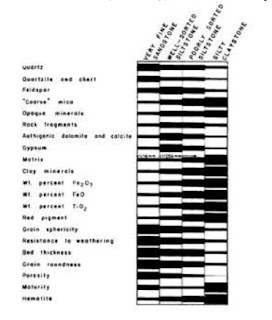The margins
of carbonate platforms can be steep, and even form vertical walls. This
contribution from Ginsburg et al. uses submersible observations of
geomorphology, biota, and sediment (illustrated by striking hand-drawn figures)
of one of the steepest margins, in Tongue of The Ocean (TOTO), a deep-water
embayment in the Bahamas, to explore the growth potential of such
margins. The results revealed a “luxurious reef-building community”
including corals, sponges, and Halimeda present even on near-vertical
walls; these organisms were interpreted to “produce slow but significant outward
accretion of the wall.” And so it turns out that beyond just being another
brick in the wall, organisms are important in building these
features.
The growth potential of a bypass margin, Great Bahama Bank by R.N. Ginsburg, P.M.
Harris, G. Eberli, and Peter K. Swart





